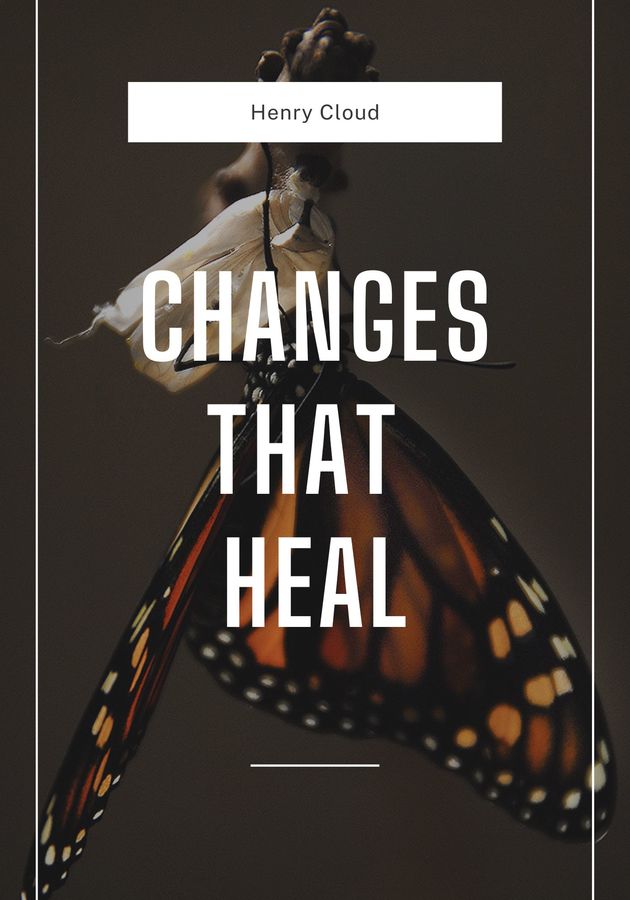In 2014, a team of researchers from Ohio University wrapped the wrists of 30 volunteers in surgical casts for one month. Half of the volunteers were asked to do nothing in particular, and half were asked to practice mental imagery exercises for 11 minutes a day, five days a week, visualizing the flexing of their immobilized wrist muscles while actually remaining completely still. At the end of the experiment, the muscles of the imagery group were twice as strong as those of the control group.
In “Becoming Supernatural,” Joe Dispenza claims that, rather than treating it as an isolated case, we should treat this interesting study as a portal to understanding the immense potential of our thoughts. Get ready to discover, through one exceptional story and an explanation almost as intriguing as the narrative, why you already have “the anatomy, chemistry, and physiology you need to become supernatural sitting latent within you, waiting to be awakened and activated.”
Stress and stressors, zebras and humans
Back in 2007, Anna Willems worked as a manager and board member for a major psychiatric institution in Amsterdam. She was a happily married mother of two beautiful children: a 12-year-old boy and an 11-year-old daughter. Life seemed almost idyllic to her when one June afternoon, seemingly not unlike many others, two police officers rang her doorbell. They asked her if they could come in and talk to her. She obliged. Then they delivered some terrifying news: earlier that morning, her husband had jumped to his death from one of the tallest buildings in Amsterdam. That’s when her daydream reality turned into a nightmare.
Anna couldn’t come to terms with the trauma. Not just at that moment, but even over the course of the following four years. She kept reliving that same day over and over again in her mind, so her body kept reliving the day as well. That is not an exaggeration, but precisely what happens when the hormones of stress take over: quite literally, our entire body goes into survival mode. When a zebra sees a lion, her sympathetic nervous system turns on, and her body gathers together an enormous amount of energy in response to the danger of being eaten. Glucose is immediately released into the bloodstream and most of the blood flow is diverted away from the internal organs to the extremities. In the presence of a lion, a zebra should only be able to run, fight or hide. That’s what survival mode is.
Our sympathetic nervous system reacts in pretty much the same way when exposed to stressors: our pupils dilate, our heart and respiratory rates increase, blood moves from the rational forebrain to our hindbrain, adrenaline and cortisol flood the muscles. However, there is one enormous difference between a zebra and a human being – and it concerns the future. Namely, once a zebra loses a lion, her body returns to balance almost immediately: she is neither afraid of the lion that may attack her two days later, nor does she go over past near-death experiences. Simply put, her mind isn’t built to work that way and neither is her body: animals cannot endure living in emergency mode for extended periods of time. Well, in truth, neither can humans. And, yet most of us do just that: endure life, rather than live it. Anna Willems learned the pitfalls of such a life the difficult way.
Opening the door to the supernatural: the case of Anna Willems
Taken over by her stress hormones, Anna embarked on a downward spiral of despair and decline after her husband’s suicide. She kept living in the past in her mind, and her body couldn’t propel her toward the future. In fact, the opposite happened: by reliving the traumatic event in her thoughts, Anna repeatedly fed her body with a cocktail of harmful stress chemicals, so living in emergency mode became the new default. And it was – for four years.
During this period, she ended up losing her job, her house and her money. She started taking all sorts of medications, but that only made things worse. On March 21, 2008, Anna woke up paralyzed from the waist down. Not being able to find anything, the doctors told her it was an autoimmune condition. “Because of her repeated inner conflict,” writes Dispenza, “Anna’s immune system was attacking her body. She had finally physically manifested the pain and suffering she’d emotionally experienced in her mind. In short, Anna could not move her body because she wasn’t moving forward in her life – she was stuck in her past.”
Being stuck in the past is a sure recipe for clinical depression – which is what Anna was diagnosed in 2009. A year later, she found herself in a dysfunctional relationship with a man who traumatized her and her children; and since she had lost her house, she had no choice but to move in with him. To make matters worse, because she had become addicted to her stress hormones, Anna tolerated the relationship: in fact, she couldn’t find joy in normal interactions. Understandably, her stress levels continued to climb, culminating in January 2011 with an esophageal cancer diagnosis. After her first chemotherapy session, Anna had a complete emotional and mental breakdown. It was then that she decided to change her life.
After visiting one of Dispenza’s workshops and hearing how “our thoughts and feelings affect our bodies and our lives” she knew precisely where to start: inside her own mind. “If I created the life I have now,” she mused, “including my paralysis, my depression, my weakened immune system, my ulcerations, and even my cancer, maybe I can uncreate everything with the same passion I created it with.” And indeed, over the following year, she succeeded in healing herself completely. First, she replaced her medications with meditations, and then her fear of the future with optimistic visualizations about her tomorrow. As the stressors faded into oblivion, the paralysis, the depression and the ulcerations subsided. In the end, even the cancer disappeared. Anna is back to her best now: fit and healthy, financially independent, and in a warm, loving relationship. All thanks to her thoughts.
The thinking-feeling loop
They ascribe the following quote to Chinese mystic Lao Tzu: “Watch your thoughts for they become your words; watch your words, they become your actions; watch your actions, they become your habits; watch your habits, they become your character; watch your character, it becomes your destiny.” It is unlikely Lao Tzu ever said it, but whoever did said something profoundly true. Not just in philosophical, but also in scientific terms.
At least that’s what Dispenza says. To quote him: “Thoughts cause biochemical reactions in your brain that release chemical signals, and those chemical signals make the body feel exactly the way you were just thinking. Those feelings then cause you to generate more thoughts that make you feel the same way you were just thinking. So your thoughts drive your feelings, and your feelings drive your thoughts, and eventually this loop hardwires your brain into the same patterns, which conditions your body into the past. And because emotions are a record of past experiences, if you can’t think greater than how you feel, this thinking-feeling loop keeps you anchored to your past and creates a constant state of being. This is how the body becomes the mind – or in time, how your thoughts run you and your feelings own you.”
So, in other words, your body isn’t built to differentiate between the past and the future – only your mind is. However, most of the time, in an attempt to conserve energy, your body follows your mind quite blindly. You learn only once to ride a bike or drive a car. Then, the patterns are transferred from your conscious (thinking) brain to your subconscious mind and your autonomic nervous system. Repeat the patterns enough times and they became engraved – not merely as programs, but as habits. We may learn consciously, but mostly we perform unconsciously.
Therefore, by the time we reach our mid-30s, the majority of who we are becomes “a memorized set of automatic thoughts, reflexive emotional reactions, unconscious habits and behaviors, subconscious beliefs and perceptions, and routine familiar attitudes.” Put another way, even though the body has been programmed by the mind to act in a certain way, it is the body – and not the conscious mind – that is running the show most of the time. Dispenza claims that 95% of us is “a subconscious body-mind program.” It’s not that the conscious 5% of us is negligible or inconsequential, but if you would really like to change your life, you must delve deep inside yourself and well beyond your analytical mind. As usual, meditation is the key.
Priming your mind and body for a new future
Think of your body as a computer. The essential processes – such as breathing, digestion or heart rate – are stored in your autonomic nervous system (ANS). Your ANS acts almost exclusively unconsciously. Meaning, by default, you are not allowed to meddle with it by way of your thoughts and conscious brain, because any mistake on your part might end up being fatal. What if you forgot to breathe, for example? But then again, it’s the same with computers: you are not allowed to tamper with vitally important system processes, because switching them off might lead to harmful consequences for the health of your computer. Of course, if you have the privileges of an administrator or, say, you are a hacker, there’s nothing that can stop you from reprogramming any process on your computer. Well, the same is true for your body as well.
As we already explained, your mind can communicate with your body. This communication is enabled by way of five brain waves (alpha, beta, theta, delta and gamma) and eight energy centers, each of which is constantly emitting different electromagnetic frequencies. The first of these energy centers is located in the reproductive area and governs the region of the sex organs. The second is behind and slightly below the navel and governs digestion and consumption. The third energy center is located in the pit of your gut and governs the stomach and the intestines. The fourth is behind your breastbone and governs the heart and lungs. The fifth energy center is located in the center of your throat and governs the thyroid gland. The sixth is at the back of your head and governs the pineal gland, called “the third eye” by Hindus. The seventh and penultimate energy center includes the pituitary gland and is located in the center of your head. The final energy center is located about 16 inches (40 centimeters) above the head and represents your connection to the cosmos.
We spend most of the time awake and conscious, in the range of beta frequencies. Unfortunately, they are unable to communicate with anything but your conscious brain. Alpha brain waves, on the other hand, appear when you’re daydreaming or imagining. As Dispenza says, “If beta brain waves indicate when you are placing the majority of your attention on your outer world, alpha brain waves indicate when you are placing more of your attention on your inner world.” The key to entering your subconscious is moving from beta brain waves to alpha brain waves. Then, claims Dispenza, you’ll be able to reach the operating system of the ANS and “reprogram each center to work in a more harmonious manner.”
This can be done through different types of meditations, visualizations and mental rehearsals. Dispenza claims that he himself regained normal movement after suffering debilitating spinal injuries solely through the power of his brain. “What you put your attention on and mentally rehearse over and over again,” he concludes, “not only becomes who you are from a biological perspective, but it also determines your future.”
Final notes
Hailed as “unique,” “practical” and even “paradigm-altering” by numerous bestselling self-help authors, “Becoming Supernatural” – at least in our opinion – leaves a lot to be desired. Dispenza admits straightaway that his ideas go against established scientific findings and theories, but he doesn’t offer enough evidence to challenge them. Big claims require big proofs, and anecdotes are no proofs at all.
Moreover – and we liked this part even less – the life-altering meditations and mental rehearsals that should help you tap into the power of your brain and body are never fully explained, and you are advised to buy additional books and CDs to put the pieces of the puzzle together.
We doubt even that would make a significant difference: “Becoming Supernatural” opens far more questions than it can answer, than, really, any book ever has.
12min tip
Be joyful. As Joe Dispenza claims, “Something as simple as moving into an elevated state of joy, love, inspiration, or gratitude for five to ten minutes a day can produce significant epigenetic changes in your health and body.”





























